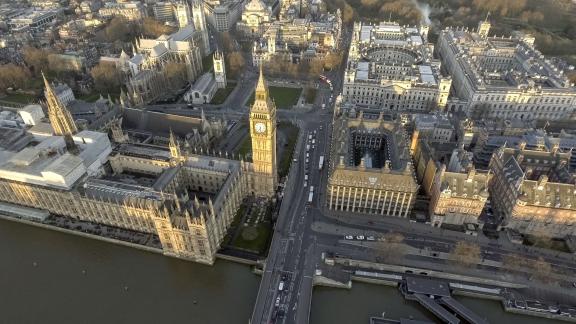Winter in summer: the NHS at crunch point

Key points
- The NHS is experiencing a surge in demand for urgent and emergency care, with the NHS experiencing a ‘winter in summer’.
- Across acute, ambulance, mental health, community and primary care services, our members are reporting major spikes in demand. A small number of trusts have declared ‘black alerts’ as they are unable to safely deliver services at this time.
- This rise in demand is overwhelming primary care in some parts of the country, with demand spilling over into all parts of the urgent care system.
- This is hampering the efforts of NHS providers to address the major backlog of care that has built up during the pandemic.
- The NHS has made huge progress in restoring services, but urgent action is needed by the government to give NHS organisations the financial clarity they need to make decisions now on staffing levels when current funding is due to end in October. Otherwise, many NHS providers will not be able to make key decisions now on how many staff they can hire and how much they can invest in their elective capacity to reduce the backlog.
- Extra funding and support will be necessary but insufficient to solve this extreme demand crunch. New approaches will be needed. We are bringing leaders from across the health and care system together on 22 July to explore the measures that can be taken to address this unprecedented demand.
- NHS England leaders urge the public to use phone and online consultations where they can to reduce demand on accident and emergency departments.
Introduction
COVID-19 admissions and deaths are currently relatively low, but SAGE is predicting that infections will rise to 50,000 per day within the next two weeks, and possibly closer to 100,000 per day within a month.
At the same time, the NHS is experiencing a surge in demand for other services, most notably urgent and emergency care. The most emblematic symbol of escalating demand for NHS services is the image of ambulances queueing at the acute trust A&E department ‘front door’. This has become an increasing feature in recent weeks driven by signs of pressure across the whole system with primary care is seeing huge pressure and the knock-on effects of COVID-19.
NHS leaders are reporting that the demand they are currently experiencing in July is akin to the pressure they usually experience in winter. The NHS is experiencing a winter in summer.
This ‘temperature check’ document outlines the views of NHS leaders on the pressures their organisations are facing as the country prepares to exit the remaining national restrictions and what implications this could have on the NHS’s efforts to recover the backlog of care that has built up during the pandemic.
What NHS leaders are saying
Leaders across all parts of the NHS – from GP practices through to hospitals and ambulance services – paint a picture of a system struggling to cope with a challenging triple task:
- managing current and escalating demand, particularly for urgent care across primary and secondary care
- reducing the sizeable backlog of elective procedures that has been exacerbated by the pandemic; and
- continuing to manage the ongoing threat from COVID-19, which requires frontline services to operate with much reduced capacity due to the need for infection prevention and control measures.
All of this is being compounded by the significant staff shortages – around 80,000 – that the NHS is experiencing, while many of our staff are exhausted after a gruelling 18 months.
It was hoped that this summer, with low numbers of hospital admissions due to COVID-19, would be an opportunity to make inroads into the waiting list which now stands at over 5.1 million people. But the NHS’s ability to do this is being hampered by rising demand in urgent and emergency care.
Black alert
The impact is evident up and down the country. In Barnsley and Manchester, for example, two NHS trusts declared ‘OPEL level 4’ in June, warning that they were not able to offer comprehensive care to patients and that safety could be compromised. This is almost unprecedented outside of a normal winter peak. Others are not far behind.
Much of the media focus has been on the number of people hospitalised with COVID-19 and the size of the elective backlog. But this misses the dramatic effects COVID-19 has had on reducing, and now increasing, the demand for urgent non-COVID-19 care in the wider health and care system. One primary care provider told us:
“I think the above inevitable spike in COVID-19 infection, long COVID, mental health and pandemic related delayed presentations will coincide with a perfect storm of annual leave, burnout, staff illness and a likely a spike in retirements from those lucky enough to be able to now focus on what matters to them […]
“NHS England and the government need a realistic assessment of actual capability on the ground and actively support teams and manage demand, not just helplines and support for those at crisis point. This requires long term investment in and a recovery of our NHS not as many fear the likely outsourcing to and boom in private healthcare providers.”
Some people postponed seeking care to avoid burdening the health system or avoid being exposed to the virus at the peak of the pandemic. Others had needs that were not picked up, for example due to not being at school. Delays to seeing a doctor, or to having a procedure, has led to the NHS now having to provide care to some patients at more advanced, urgent or complex stages than might otherwise have been needed.
Now that this demand is starting to emerge, it is overwhelming primary care, with demand spilling over into all parts of the urgent care system.
In London, one NHS acute trust chief executive told us that the number of children turning up to A&E is 50 per cent higher than before the pandemic. Ambulance trust leaders say that demand for 111 services is at unsustainable highs. Modelling suggests that 1.5 million children and young people may need new or additional mental health support because of the pandemic. 1 And various parts of the system, particularly primary care, are experiencing new complex demand associated with long COVID.
NHS leaders report ongoing problems with filling rotas, particularly among registered healthcare staff and the implication of this on their ability to safely staff certain clinical services. This is forcing some trusts to consider whether they can sustain elective activity at current levels. This situation has been compounded by some bank staff refusing additional work due to the conditions on wards and other units.
One acute trust operational director told us that in all his 39 years of operational service in the NHS, he had never witnessed anything like the crisis for staffing currently being faced.
NHS Confederation viewpoint
There is growing concern among NHS leaders that they are experiencing rapidly rising demand for urgent and emergency care that threatens to slow down their attempts to recover the elective care backlog.
Most people will be familiar with the winter pressures the NHS faces each year. What the public will be less familiar with is this phenomenon happening in the middle of the summer.
Urgent action is needed by the government to give NHS organisations the financial clarity they need to make decisions now on staffing levels
Across acute, ambulance, mental health, community and primary care services, our members are reporting spikes in demand. This is overwhelming primary care in some parts of the country, with demand spilling over into all parts of the urgent care system. With trusts struggling to fill rotas, particularly among registered healthcare staff, there is a very real risk that they will struggle to sustain elective activity at current levels.
The NHS has made huge progress in restoring services, but urgent action is needed by the government to give NHS organisations the financial clarity they need to make decisions now on staffing levels. As we wrote to the Chancellor last week to outline, the NHS does not have financial certainty for October onwards and this means NHS providers often cannot make key decisions now on how many staff they can hire and how much they can invest in their elective capacity to reduce the backlog.
The current uncertainty means they are unable to plan beyond 12-month fixed-term contracts for key skilled professionals
For example, trusts are telling us that the current uncertainty means they are unable to plan beyond 12-month fixed-term contracts for key skilled professionals, meaning they are more likely to go elsewhere, or not apply at all as the roles are not permanent. Or that they are unable to plan for overseas or large-scale recruitment projects that require additional up-front investment.
Without this certainty, many providers will face the unenviable choice of taking on more staff and making changes to their theatre capacity at significant financial risk, or to choose to stay within their budget but face spiralling waiting lists. This could also create serious bottlenecks to joined-up patient care.
Extra funding and support will be necessary but insufficient to solve this extreme demand crunch. New approaches will be needed. We are convening leaders across the system on 22 July and will soon be able to share their perspectives around how the health and care system should proceed.
Next steps
We are convening leaders from across the health and care system for a private event on 22 July to discuss what solutions can be put in place.
Footnotes
- 1. UK Parliament (2020), Disabled Children: Accessible and Inclusive Education Volume 685: debated on Wednesday 9 December 2020https://hansard.parliament.uk/commons/2020-12-09/debates/877C14E3-B320-4B00-8A2D-1F0A49C04C58/DisabledChildrenAccessibleAndInclusiveEducation ↑



